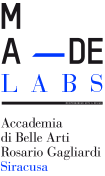Ceroplastica
"The Romans already used wax to model votive figurines, both to decorate the interiors of their homes and for certain magical practices. Isabela Joyela, a 'witch' condemned by the Holy Office of Palermo in 1602, crafted dolls from Paschal candle wax, which she delivered to clients to seduce a person. During a trial for magic, it was also reported that a friar, prior of a monastery outside the city in Zisa, Palermo, knew how to create beautiful figurines in virgin wax, which he would prick with needles, bury, and then celebrate 'dedicated' masses to bring about the death of an enemy. Wax was also used to make funeral masks, as well as figurines used by children in a game similar to chess called ‘latruncoli’. Finally, wax ex-voto also represented anatomical figures offered to various deities to promote healing. Pliny informs us that these wax figurines were called cerae pictae, painted wax.
Between the late 17th and 18th centuries, wax saw widespread use not only as a material for creating sacred images or ex-votos but also for making anatomical models for educational and scientific purposes. It was during this period that the Syracusan Giulio Gaetano Zummo established himself as a creator of these wax anatomical models, which medical students of the time used for practice."
Luigi Lombardo, Dialoghi Mediterranei, No. 36, March 2019
During this workshop, we will explore the techniques of ceroplastics, a 'technology' specific to Sicily among other regions. This craftsmanship has significantly influenced Mediterranean popular art, particularly in the making of votive candles, funeral masks, and processional candles. For example, the wax ex-votos from Melilli (north of Syracuse), displayed during the festivities on May 3rd and 4th, remain a valuable testimony to an enduring ritual, but also to an artisanal tradition linked to honey and virgin wax production.
We will re-invest this often considered modest material, and the simple techniques associated with it, guided by the importance of the act of making, of doing as a means of thought. We aim to question the current perspective of technology by adopting an alternative approach of mental distancing. Could what once constituted technology help us reconsider our relationship with matter, with our sensitivities, to shapes and their symbolic meanings?
We will examine various techniques for shaping and creating projects in wax: molding, direct sculpture, coloring, etc., while exploring, from a contemporary perspective, the votive, funerary, and processional traditions intrinsic to this highly symbolic material on the Sicilian territory.
- Slot 2 . 14-19.07.2025
 Photo: Nino Privitera, Melilli. La festa di maggio, 1975 — Courtesy of the artist
Photo: Nino Privitera, Melilli. La festa di maggio, 1975 — Courtesy of the artist

